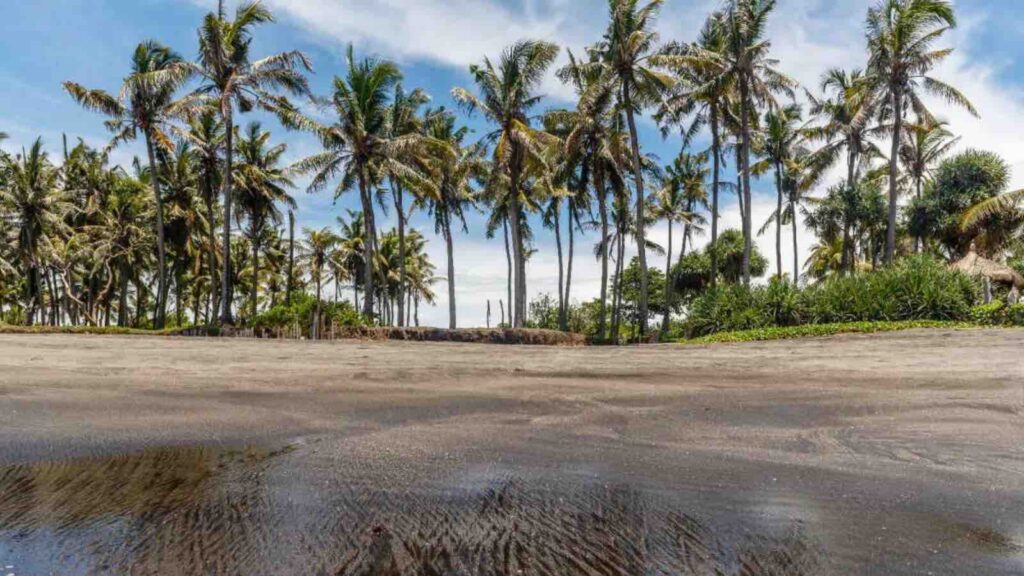Bali’s ancient trees cut down to development, sparking viral outrage.
In Bali, known for its lush landscapes and pristine beaches, a recent incident has ignited a debate over development and conservation. A viral video, shared by @The Rahayu Project on May 4, 2024, captures the moment a century-old tree was cut down in the Seseh area, reportedly to make way for a new beach club. The video, which quickly spread across social media, prompted outrage and a poignant question: “How many more trees will go down in the name of profit?”
RELEVANT SUSTAINABLE GOALS


The video drew widespread criticism, compelling the developer involved to issue a clarification. The controversy also caught the attention of Niluh Djelantik, a recently elected Senator for 2024-2029, who voiced her concerns on Instagram. Djelantik argued that Bali does not need another beach club at the expense of its natural heritage and urged the Balinese government to resist developments that threaten the island’s environment. “The Balinese government must be firm, or the universe will teach a lesson to those who prioritize profit over the love and care of Bali,” she wrote.
This incident is not isolated. Tree felling is a common and destructive practice in Bali. In 2023, illegal logging was rampant in the northern forests of Jembrana, particularly in the Banja Sari Kuning area of Tukadaya Village. Local residents reportedly cut down trees managed by the West Bali Forest Management Unit, selling the timber and replacing the forest with banana plantations.
The environmental degradation is palpable in Sanur, where landmark trees that once shaded and cooled the streets are disappearing. The removal of these trees is transforming Sanur into a hotter, more concrete-dominated landscape. The loss of a large tree outside the Besakih Hotel has been particularly mourned by the community.
Profit Over Nature ?
The ongoing deforestation is driven by land developers and others in the construction industry who often see trees as obstacles rather than assets. This mindset poses a significant challenge to conservation efforts and highlights the broader implications of unchecked development. “Trees grow quickly in Bali, but it will still take 30 or 40 years for them to reach full maturity,” one local resident noted, emphasizing the importance of integrating existing trees into new developments rather than removing them.
The debate reached a critical point when a local commentator, @Thiadarmawinata, questioned whether the permit for the beach club could be revoked, citing the project’s indirect harm to the local economy and the vendors who rely on the beach for their livelihoods.
In Bali, developers frequently clear forests and mangroves and drain wetlands to make room for new hotels, resorts, and shopping malls. Similar patterns are observed in countries like Vietnam and Mexico, where natural landscapes are transformed to accommodate golf courses and train lines. These developments not only disrupt local ecosystems but also displace Indigenous communities, who are sometimes forcibly removed to designate lands as national parks or protected areas. These communities are often then labeled as illegal settlers and are vulnerable to arrest.
“To truly ensure that tourism does not leave anyone behind, it is crucial for tourist operators and companies to engage directly with Indigenous communities, local businesses, and NGOs,” Marks emphasized. He advocates for governments to recognize and formally protect these communities’ rights to their ancestral lands.
Rakhmat Hidayat, a regional manager at the non-profit think tank WRI Indonesia, champions the idea of “eco-educational tourism,” which could provide a sustainable path forward. This form of tourism would allow visitors to learn about local cultures, forest plants, and ecosystems, while also offering opportunities for tree adoption and the development of forest-related products like honey or crafts.
“Such initiatives allow the community to prosper economically while still preserving and living in harmony with their traditional culture,” Hidayat explained. As Bali navigates its post-pandemic future, the balance between economic recovery through tourism and the preservation of its cultural and natural heritage remains a delicate challenge.
As Bali faces the dual challenges of development and environmental preservation, the fate of its ancient trees—and the character of the island itself—hangs in the balance. The situation calls for a thoughtful approach to development, one that respects and preserves the natural beauty that makes Bali a beloved destination worldwide.
You may also be interested in :
Study Reveals Birds Boost Forest Carbon Storage by 38% In tropical Regeneration Efforts


